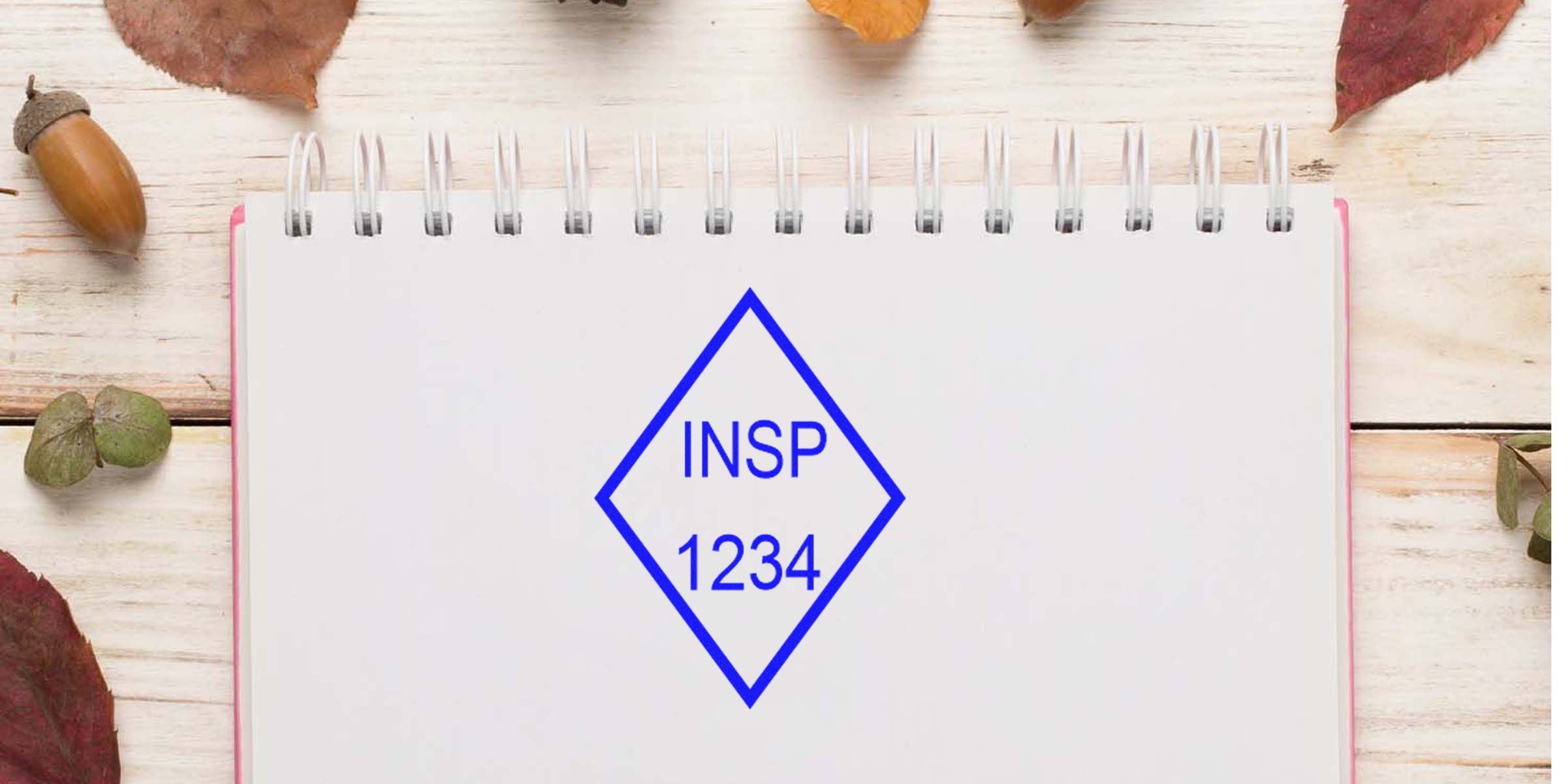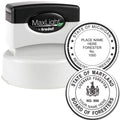Understand the QA Inspection Stamp
Have you ever wondered how you can make your quality checks smoother, faster, and more reliable? A QA inspection stamp could be your best ally. You simply press this small device onto your documents, products, or packaging to show that everything has passed your quality standards. If you handle any kind of production, packaging, or warehouse process, investing in a reliable quality assurance stamp is crucial.
By placing a clear mark on each product or checklist, you create a consistent and professional procedure that assures your team (and customers) that items have been vetted. It might seem like a simple step, but trust me, it boosts confidence in your workflow. After all, a quick and clear “Inspected” or “Approved” stamp speaks volumes about your dedication to high standards.
Know Why Quality Checks Matter
You might ask yourself, “Is a QA inspection stamp really necessary?” The short answer is yes. While quality checks can sometimes feel routine, they are the backbone of any reliable business. Customers expect consistent, error-free products or services, and a dedicated inspection routine is how you meet that expectation every single time.
- Ensures consistency: A visible stamp signals that every checked item meets the same benchmark.
- Builds accountability: If there is an issue, you can trace back who inspected that specific item.
- Saves time: A stamped mark quickly communicates the product’s status without extra conversation or guesswork.
Quality assurance marks are not just for big factories. Even small businesses or home-based operations can use them to streamline their process and make things look more professional.
Choose the Right Stamp for You
Selecting the right qa inspection stamp is a bit like choosing the best tool in your toolbox. You want something that fits your workflow, feels comfortable in your hand, and produces a crisp, easy-to-read impression. So, let’s narrow down the basic considerations.
Consider Stamp Size and Shape
Different tasks call for different stamp shapes and sizes. For example, if you plan to stamp small tags or tiny shipping boxes, a compact stamp face is key. Bigger stamps, on the other hand, might clutter your space or produce an oversized mark that is hard to position.
- Round stamps: Often used for official seals and logos
- Rectangular stamps: Ideal for straightforward text, such as “QA Passed” or “QC Approved”
- Square stamps: Perfect for fitting both text and a small design
You might want to measure the surface area of the item you are stamping to pick the right shape and size. You will thank yourself later when your stamp fits perfectly every time.
Check Material and Style
Rubber stamps are the tried-and-true classic, but self-inking stamps (which contain an internal ink pad) offer convenience. Pre-inked designs can produce extra-sharp imprints, but they do require special reinking supplies. Ask yourself how many times per day you plan to use your stamp. High-volume production often calls for a sturdy, self-inking stamp, while smaller-scale usage might work just fine with a standard rubber style and a separate ink pad.
Here is a quick table comparing common stamp types:
| Stamp Type | Key Benefit | Ideal Volume |
|---|---|---|
| Rubber Stamp | Cost-effective and versatile | Low to medium daily usage |
| Self-Inking | All-in-one convenience | Medium to high daily usage |
| Pre-Inked | Sharp, detailed impressions | Medium to high daily usage |
Add Custom Text or Logo
If you have specific quality control text, like “QC Passed” or “QA Verified,” you will want a customized stamp. Some businesses incorporate their company name or essential data (like date, batch number, or initials) for extra clarity. You can even add your company logo inspection stamp to enhance brand consistency across all your products. If you are curious, take a look at a company logo inspection stamp to get a better idea of how personalization can boost your brand presence.
Explore ESS for Quality Assurance
When searching for top-notch custom stamps, ESS deserves your attention. Family owned and operated since 1964, ESS has built a reputation for delivering excellent customer service and very fast turnaround times. Whether you need a single stamp or an entire set, you get the benefit of a consistent, premium-quality product.
Appreciate the Family Legacy
Why does a family-owned heritage matter? Simple. It speaks to the care and pride put into every order. A company operating since 1964 has decades of expertise, so you know they have dealt with all sorts of requests, from small business needs to high-volume orders. They have perfected the balance between personalized service and professional results, meaning you can expect your stamps to arrive exactly as promised.
Enjoy Fast Turnaround and Service
Ever been in a pinch, needing a new stamp faster than you expected? With ESS, you can relax. Their swift turnaround is especially helpful if you suddenly realize you need multiple QA inspection stamps right away. Because quality checks often cannot wait, you will be grateful for a stamp supplier who respects your timeline. Short lead times mean you can keep your operations flowing smoothly, even when urgent projects come up.
Follow a Simple Stamping Process
Once you have your stamp, it is time to integrate it into your workflow. If you are not quite sure how to do that, here is a quick, step-by-step guide.
-
Prep Your Materials
Make sure your documents, labels, or products are clean and dry. Any surface dust or moisture can affect how cleanly the ink adheres. Open or Re-Ink (If Needed)
For self-inking or pre-inked stamps, double-check the level of ink. For rubber stamps, get a fresh, properly inked pad ready.Align the Stamp
Hold the stamp firmly, position it over the spot you want to mark, and line up any orientation guides the stamp might have.Press and Lift
Press down with gentle, even pressure. Simply lift the stamp straight up to avoid smearing.Check the Impression
Look over the first few imprints to ensure the text is crisp. If not, adjust the ink level or your stamping pressure.
Once you get the hang of it, the stamping process becomes second nature. You will save even more time overall, and your quality control records will look neat and professional.
Avoid Common Mistakes
Even with a great QA inspection stamp, a few pitfalls can pop up if you rush through the process. Here are some of the most common mistakes:
- Over-Stamping: Repeatedly pressing the stamp to get a darker impression can lead to smudges or thick blobs of ink. Instead, re-ink properly if you notice the impression fading.
- Poor Storage: Leaving your stamp in direct sunlight or extreme temperatures can cause the rubber (or polymer) to crack or warp over time.
- Misalignment: If you are stamping quickly, you might place the mark crookedly or off-center. Slow down, and use any built-in alignment guides.
- Skipping Test Runs: Test your stamp on scrap paper, particularly if you switched ink pads or just re-inked. A single test can save you from misprints on crucial items.
Maintain Your Stamp for Longevity
A well-kept stamp performs better and lasts longer. So do not skip out on simple maintenance steps:
Wipe It Clean
After a busy stamping session, gently wipe off excess ink with a damp cloth. This keeps dried ink from building up on the design.Keep Ink Handy
Over time, your stamp will need reinking if you use it frequently. Make sure you have the correct ink type (water-based, oil-based, etc.) for your particular stamp.Store Properly
Put your stamp in a dust-free container or a small drawer. For self-inking stamps, always retract them into the rest position to protect the stamping surface.Inspect Periodically
Give your stamp a quick once-over every month or so. Look for signs of wear, like cracks or tears. Identifying wear early helps you plan replacements before the stamp becomes unusable.
With periodic maintenance, you will ensure your QA inspections remain crisp and professional-looking for as long as possible.
See Real-World Benefits
After committing to a consistent quality control system, you will notice measurable improvements. Meaningful QA checks reduce returned goods, boost customer satisfaction, and lower overall waste. A properly stamped item, whether it is a food package or manufactured part, tells everyone in the supply chain that your company values quality. This reduces confusion and helps you stand out from competitors who might be a bit more careless about product inspection.
- Increased trust: Customers and employees alike recognize and appreciate standardized processes.
- Improved workflow: Less time wasted second-guessing whether a piece has been inspected.
- Reduced errors: Clear, bold stamps prevent accidental re-checks or missed checks.
Over time, these small efficiency gains add up, and you will be happy you integrated a strong system—with a dependable stamp—into your daily operations.
Frequently Asked Questions
Do I need a custom design or a stock stamp?
This depends on your workflow. If you just need a simple “QA Passed,” a standard option works great. But if you want to feature your company name or a specific date line, a custom option is ideal.How often should I re-ink my stamp?
It largely depends on how frequently you use it. If the impression starts to fade or look uneven, re-inking can bring back its crisp appearance. Always follow the recommended ink type for your chosen stamp.Can I stamp on different surfaces?
Absolutely. You can use your qa inspection stamp on paper, cardboard, or sometimes even plastic. Just ensure you have the right ink for the material, so you get a permanent mark that does not smudge.Are there bulk order discounts?
Many suppliers, including ESS, offer price breaks when you order multiple stamps. If your business requires a variety of stamp designs, it is worth asking about volume discounts.What happens if I make a mistake in my stamp design?
Mistakes can happen, especially if you have a detailed design. Choose a supplier with an excellent customer service track record (like ESS) so you can fix the issue quickly. Proofing your stamp design before production can prevent hiccups.
Final Thoughts
Investing in a sturdy, reliable QA inspection stamp elevates your business practices by speeding up checks and sustaining a clear quality assurance routine. You maintain consistency, build trust, and present a professional image, which can set you apart in a competitive market.
Whether you are seeking a straightforward “Approved” rubber stamp or a fully customized piece with your logo, consider partnering with a family-run provider like ESS. With their decades of expertise, very fast turnaround, and a commitment to top-tier customer service, you will have confidence in every stamp you press. So go ahead, improve your workflow, and show the world how serious you are about quality—one clean, crisp impression at a time.


















